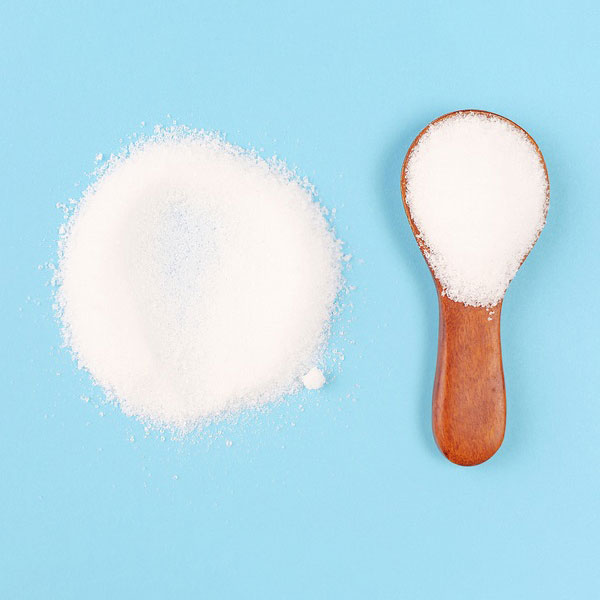What Makes Erythritol a Leading Sugar Substitute?
2025-08-06
In the global push for healthier dietary choices, sugar substitutes have become indispensable, and among them, erythritol has risen to prominence. A naturally occurring sugar alcohol, erythritol offers a sweet taste without the calories or glycemic impact of traditional sugar, making it a favorite in food and beverage formulations, dietary supplements, and even personal care products. Its unique combination of properties—zero net calories, tooth-friendly attributes, and compatibility with various diets—has set it apart in a crowded market of sweeteners. As consumers increasingly prioritize health, weight management, and reduced sugar intake, understanding what makes erythritol a leading choice for both manufacturers and individuals is essential. This guide explores the reasons behind erythritol’s popularity, its production process, detailed specifications of our premium product, and answers to common questions, highlighting its role as a versatile and beneficial sugar alternative.
Trending News Headlines: Top Searches on Erythritol
- "Erythritol: The Go-To Sweetener for Low-Carb Diets in 2024"
- "Why Food Brands Are Switching to Erythritol for Sugar-Free Products"
- "Erythritol vs. Stevia: Which Is Better for Baking and Beverages?"
Why Erythritol Stands Out as a Sugar Substitute
Zero Net Calories and Low Glycemic Impact
One of erythritol’s most compelling attributes is its minimal caloric contribution. Unlike sugar, which contains 4 calories per gram, erythritol provides only 0.24 calories per gram, and because the human body absorbs it poorly (only about 90% is excreted unchanged in urine), it is often considered to have zero net calories. This makes it an ideal choice for weight management and low-calorie diets. Additionally, erythritol has a glycemic index (GI) of 0, meaning it does not raise blood sugar levels or trigger insulin responses. This is particularly beneficial for individuals with diabetes, prediabetes, or those following low-carb diets like keto, where maintaining stable blood sugar is critical. For food manufacturers, this allows the creation of products labeled "sugar-free," "low-calorie," or "diabetic-friendly," tapping into fast-growing market segments.
Natural Origin and Clean Label Appeal
Erythritol occurs naturally in small amounts in fruits like grapes, melons, and pears, as well as in fermented foods such as wine, cheese, and soy sauce. While commercial erythritol is produced through fermentation (similar to how yogurt or beer is made), its natural occurrence aligns with consumer demand for "clean label" ingredients—substances that are recognizable, minimally processed, and derived from natural sources. Unlike some artificial sweeteners (e.g., aspartame or sucralose), erythritol is often perceived as a more natural alternative, making it attractive to brands aiming to meet consumer preferences for transparency and simplicity in ingredient lists. This natural origin also helps it comply with clean label regulations in many regions, further boosting its appeal to manufacturers.
Tooth-Friendly Properties
Dental health is a growing concern for consumers, and erythritol offers a significant advantage over sugar in this regard. Sugar feeds harmful bacteria in the mouth, which produce acids that erode tooth enamel and cause cavities. Erythritol, however, does not break down into acids and actually inhibits the growth of these bacteria (such as Streptococcus mutans), reducing the risk of tooth decay. Studies have shown that regular consumption of erythritol can help prevent plaque formation and lower the incidence of cavities, making it a preferred sweetener for oral care products like sugar-free chewing gum, toothpaste, and mouthwash. For food and beverage brands, this tooth-friendly benefit adds a valuable marketing angle, appealing to parents, health-conscious adults, and anyone prioritizing dental wellness.
Superior Taste and Texture
Unlike some sugar substitutes that have bitter aftertastes or metallic notes, erythritol closely mimics the taste of sugar, with a clean, sweet flavor and no unpleasant lingering sensations. Its sweetness intensity is about 70-80% that of sugar, making it easy to blend with other sweeteners (like stevia or monk fruit) to achieve the desired level of sweetness without compromising taste. In terms of texture, erythritol has a crystalline structure similar to sugar, which makes it suitable for baking, as it contributes to the crispness of cookies, the tenderness of cakes, and the smoothness of icings. It also dissolves easily in liquids, making it ideal for beverages like sodas, smoothies, and coffee. This combination of taste and texture makes erythritol a versatile option for manufacturers looking to create sugar-free products that consumers will enjoy as much as their sugary counterparts.
Digestive Tolerance
While many sugar alcohols (such as xylitol, sorbitol, or maltitol) can cause digestive discomfort like bloating, gas, or diarrhea when consumed in large amounts, erythritol is far more tolerable. This is because it is absorbed more efficiently in the small intestine and excreted quickly, reducing the likelihood of osmotic effects in the colon that lead to digestive issues. Most people can consume 20-50 grams of erythritol per day without experiencing side effects, which is significantly higher than the tolerance levels for other sugar alcohols. This digestive friendliness makes it a practical choice for both consumers and manufacturers, as it allows for higher usage levels in products without compromising consumer comfort.
How Is Erythritol Produced?
Raw Material Preparation
The primary raw material for erythritol production is glucose, typically derived from corn starch, which is hydrolyzed to produce high-purity glucose syrup. This glucose serves as the substrate for fermentation. Other key materials include water (meeting strict purity standards to avoid contamination) and nutrients (such as nitrogen sources and minerals) to support microbial growth. Before production begins, the glucose syrup is tested for impurities, including heavy metals, residual sugars, and mycotoxins, to ensure it meets quality specifications. This step is critical, as impurities can interfere with the fermentation process and affect the final product’s safety and taste.
Fermentation
Fermentation is the core step in converting glucose to erythritol. The process uses a strain of yeast—most commonly Moniliella pollinis or Torula corallina—which metabolizes glucose under aerobic conditions (in the presence of oxygen) to produce erythritol. The glucose solution is mixed with nutrients and fed into a fermentation tank, which is maintained at a controlled temperature (typically 30-35°C) and pH level (around 5.0-6.0) to optimize yeast activity. Oxygen is supplied through aeration, and the mixture is agitated to ensure uniform conditions. Over the course of 72-96 hours, the yeast converts glucose to erythritol, with the reaction monitored closely to track sugar consumption and erythritol production. This extended fermentation period allows for high yields, with typical conversion rates of 40-50% of glucose to erythritol.
Filtration and Purification
After fermentation, the resulting broth contains erythritol, residual glucose, yeast cells, and other byproducts. The first purification step is filtration, where the broth is passed through a series of filters (including microfiltration and ultrafiltration) to remove yeast cells and solid particles. This produces a clear, amber-colored solution rich in erythritol. Next, the solution undergoes ion exchange chromatography to remove mineral ions (such as sodium, potassium, and calcium) and organic acids, which could affect the taste or stability of the final product. For food-grade erythritol, additional purification steps may be used, such as activated carbon treatment to remove color and impurities, ensuring a white, odorless product.
Concentration and Crystallization
The purified erythritol solution is concentrated to increase its solids content, typically through evaporation. The solution is heated under reduced pressure to remove water, which lowers the boiling point and prevents thermal degradation of the erythritol. This process continues until the solution reaches a concentration of 70-80% solids. The concentrated solution is then transferred to a crystallizer, where it is cooled gradually to induce the formation of erythritol crystals. Seed crystals may be added to promote uniform crystal growth. The crystals are allowed to settle, and the mother liquor (remaining liquid containing residual erythritol and impurities) is removed and recycled to maximize yield.
Drying and Milling
The erythritol crystals are separated from any remaining liquid using centrifugation and then dried to remove residual moisture. Drying is typically done in a vacuum dryer or fluidized bed dryer at temperatures below 60°C to preserve the product’s stability and sweetness. The dried crystals are then milled to achieve a uniform particle size, which is important for consistent dissolution and handling in food applications. The final product is sifted to remove any oversized particles, ensuring it meets the desired particle size distribution for various uses, from baking mixes to beverage powders.
Quality Control
Our Erythritol Specifications
|
Parameter
|
Food-Grade Erythritol
|
|
Chemical Formula
|
C₄H₁₀O₄
|
|
Appearance
|
White crystalline powder, odorless
|
|
Purity
|
≥99.5% (by dry weight)
|
|
Moisture Content
|
≤0.2%
|
|
Caloric Value
|
0.24 kcal/g
|
|
Glycemic Index
|
0
|
|
Sweetness Intensity
|
70-80% of sucrose (sugar)
|
|
pH Value (10% aqueous solution)
|
5.0-7.0
|
|
Heavy Metals (as Pb)
|
≤10 ppm
|
|
Arsenic (As)
|
≤2 ppm
|
|
Lead (Pb)
|
≤1 ppm
|
|
Nickel (Ni)
|
≤2 ppm
|
|
Residual Glucose
|
≤0.1%
|
|
Residual Sorbitol/Xylitol
|
≤0.1%
|
|
Particle Size
|
80-120 mesh (standard); 200 mesh available upon request
|
|
Solubility
|
≥60g/100mL in water at 20°C
|
|
Melting Point
|
118-120°C
|
|
Bulk Density
|
0.8-1.0 g/cm³
|
|
Shelf Life
|
24 months when stored in original, sealed packaging in a cool, dry place
|
|
Packaging
|
25kg woven bags with polyethylene liners; 1000kg jumbo bags available
|
FAQ: Common Questions About Erythritol
A: Erythritol is generally considered safe for dogs and other pets, unlike some sweeteners that are toxic to animals. For example, xylitol (another sugar alcohol) can cause severe hypoglycemia (low blood sugar) and liver failure in dogs, but erythritol does not have this effect. Studies and veterinary guidelines indicate that erythritol is not absorbed efficiently by pets, meaning it does not accumulate in their bodies or cause the same metabolic issues as xylitol. However, as with any new food, it’s best to introduce erythritol to pets in small amounts to monitor for digestive upset, such as diarrhea, which can occur if consumed in large quantities (though this is rare compared to other sugar alcohols). Pet food manufacturers increasingly use erythritol in sugar-free treats for pets, as it provides sweetness without the risks associated with xylitol. Always check with a veterinarian before adding new ingredients to your pet’s diet, but erythritol is widely regarded as a safer alternative to many other sweeteners for animals.



